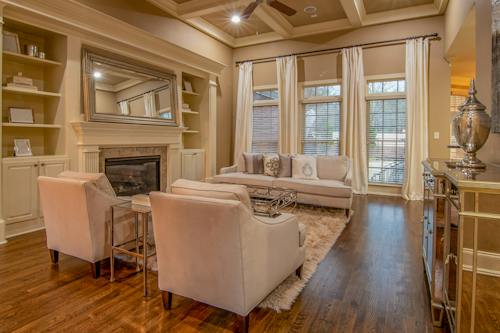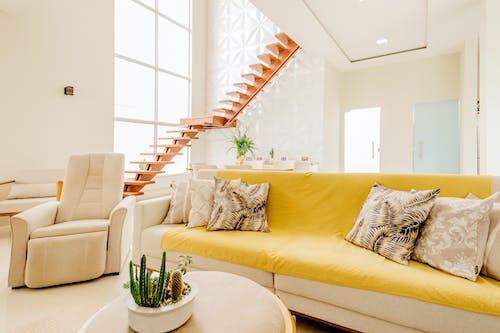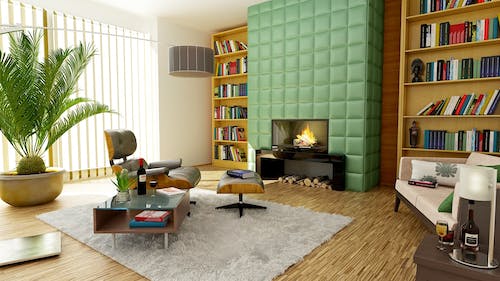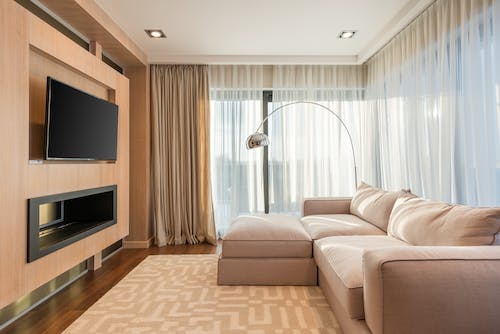Transform Your Space with These Interior Design Tips
As an experienced interior designer, I have seen firsthand how the right design can transform a space. With the right colors, furniture selection, and accessories, any room can become a comfortable and inviting space. In this article, I’ll share my top interior design tips to help you transform your space into something truly special.
The Importance of Interior Design
Interior design is more than just making a space look pretty. It’s about creating a functional and comfortable environment that meets your needs and reflects your personality. A well-designed space can make you feel relaxed and at home, while a poorly designed space can be stressful and uncomfortable.
Good interior design can also add value to your home. If you’re planning to sell your home in the future, a well-designed space can make it more attractive to potential buyers and increase its resale value.
The Basics of Interior Design
Before you start decorating your space, it’s important to understand the basics of interior design. There are three basic principles of interior design: balance, rhythm, and harmony.
Balance refers to the way different elements are arranged in a space. A balanced space feels stable and visually pleasing. There are two types of balance: symmetrical and asymmetrical. Symmetrical balance is when two sides of a space are identical, while asymmetrical balance is when two sides are different but still visually balanced.
Rhythm refers to the way your eye moves around a space. A well-designed space will have a natural flow that guides your eye from one area to another. Repetition is a common way to create rhythm in a space.
Harmony refers to the way different elements in a space work together. A harmonious space will have a consistent style and color scheme. It’s important to choose colors, patterns, and textures that work well together to create a cohesive look.
Choosing a Color Scheme
One of the most important decisions you’ll make when designing a space is choosing a color scheme. Color can have a big impact on the mood and feel of a room. When choosing colors, it’s important to consider the function of the space, as well as your personal preferences.
Neutral colors like beige and gray are a safe choice for most spaces. They create a calm and relaxing atmosphere and can be paired with bold accents for a pop of color. If you want to create a more dramatic look, consider using bold colors like red or navy blue.
When choosing a color scheme, it’s also important to consider the lighting in the space. Natural light can make colors look different than they do in artificial light, so it’s important to test your colors in different lighting conditions before making a final decision.
Furniture Selection and Placement
The furniture you choose for your space can have a big impact on its overall look and feel. When selecting furniture, it’s important to consider the function of the space, as well as the size and layout of the room.
In a living room, for example, you’ll want to choose a comfortable sofa and chairs that are large enough to accommodate your family and guests. In a bedroom, you’ll want to choose a bed that’s the right size for the room and provides the necessary support for a good night’s sleep.
When placing furniture in a space, it’s important to consider the flow of the room. You’ll want to create a natural traffic flow that allows people to move around the room easily. Avoid placing furniture in front of doors or blocking windows, as this can make a space feel cramped and uncomfortable.
Read More: Enhance Your Space Like a Pro
Lighting Design
Lighting is an important aspect of interior design that is often overlooked. Good lighting can make a space feel warm and inviting, while poor lighting can make it feel cold and uninviting.
When designing your lighting scheme, it’s important to consider the different types of lighting: ambient, task, and accent lighting. Ambient lighting provides overall illumination for a space, while task lighting is used for specific tasks like reading or cooking. Accent lighting is used to highlight specific features in a space, like artwork or architectural details.
It’s also important to consider the color temperature of your light bulbs. Warm light (2700K-3000K) can create a cozy and inviting atmosphere, while cool light (4000K-5000K) can create a bright and energizing atmosphere.
Accessorizing Your Space
Accessories are the finishing touches that can take a space from ordinary to extraordinary. When accessorizing your space, it’s important to choose items that reflect your personality and add to the overall style of the room.
Artwork is a great way to add color and personality to a space. Choose pieces that speak to you and complement the color scheme of the room. Plants are another great way to add life and color to a space. Choose plants that are easy to care for and fit the lighting conditions of the room.
When accessorizing your space, it’s important to strike a balance between clutter and emptiness. Too many accessories can make a space feel cluttered and overwhelming, while too few can make it feel empty and uninviting.
Maximizing Small Spaces
Small spaces can be a challenge to decorate, but with the right design, they can be just as comfortable and inviting as larger spaces. When designing a small space, it’s important to choose furniture that is appropriately sized for the room. Avoid oversized furniture that can make a space feel cramped.
When arranging furniture in a small space, it’s important to create a natural flow that allows people to move around the space easily. Use multifunctional furniture, like a storage ottoman or a sleeper sofa, to maximize the functionality of the space.
Lighting is also important in small spaces. Use light-colored walls and furniture to create the illusion of more space, and choose lighting fixtures that provide adequate illumination without taking up valuable space.
Incorporating Trends into Your Design
Trends can be a fun way to add a fresh look to your space, but it’s important not to go overboard. When incorporating trends into your design, choose elements that complement your existing style and add to the overall look of the room.
One way to incorporate trends into your design is to choose trendy accessories, like pillows or throws, that can be easily swapped out as the trends change. You can also incorporate trends into your design through artwork or accent walls.
When incorporating trends into your design, it’s important to choose elements that are timeless and won’t go out of style quickly. Avoid trendy furniture pieces that may look dated in a few years.
Working with an Interior Designer
If you’re feeling overwhelmed by the design process, working with an interior designer can be a great option. An interior designer can help you create a cohesive design plan that meets your needs and reflects your personal style.
When choosing an interior designer, it’s important to do your research and choose someone with experience and a portfolio of work that you admire. Be clear about your budget and expectations, and communicate openly with your designer throughout the process.
Conclusion
Interior design is an important aspect of creating a comfortable and inviting home. By following these tips, you can transform any space into something truly special. Whether you’re working with an interior designer or tackling the project on your own, remember to consider the function of the space, choose a cohesive color scheme, and select furniture and accessories that reflect your personal style.
CTA
If you want to transform your space with the help of an experienced interior designer, we’re here to help. Contact us to schedule a consultation and get started on your design journey.






